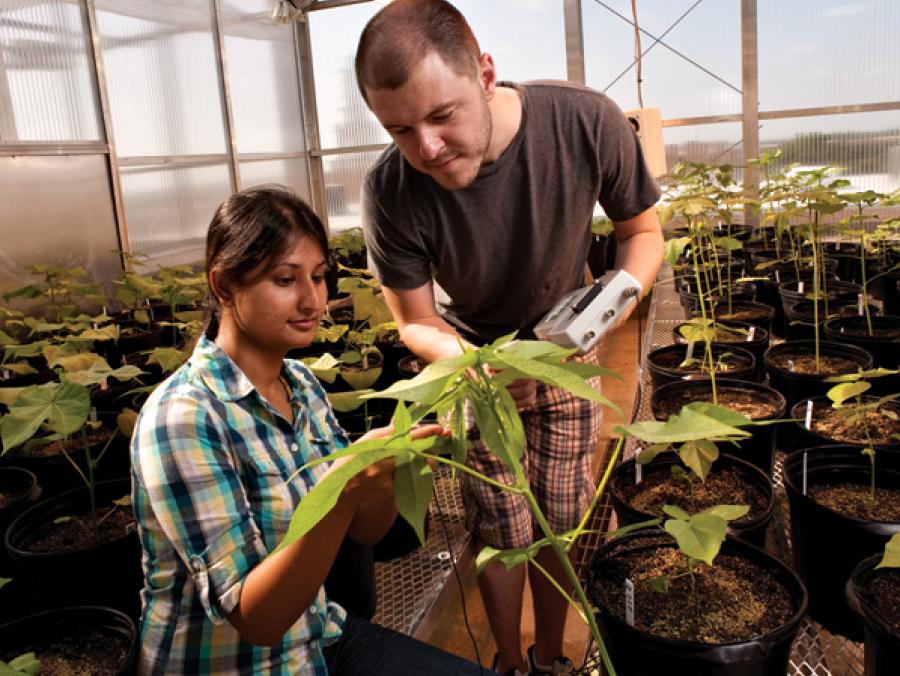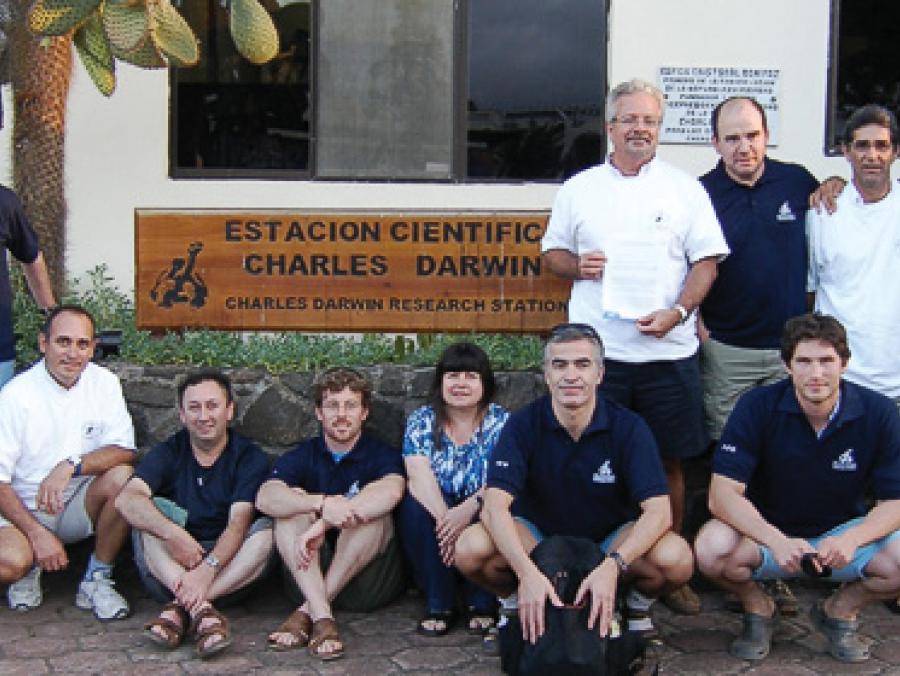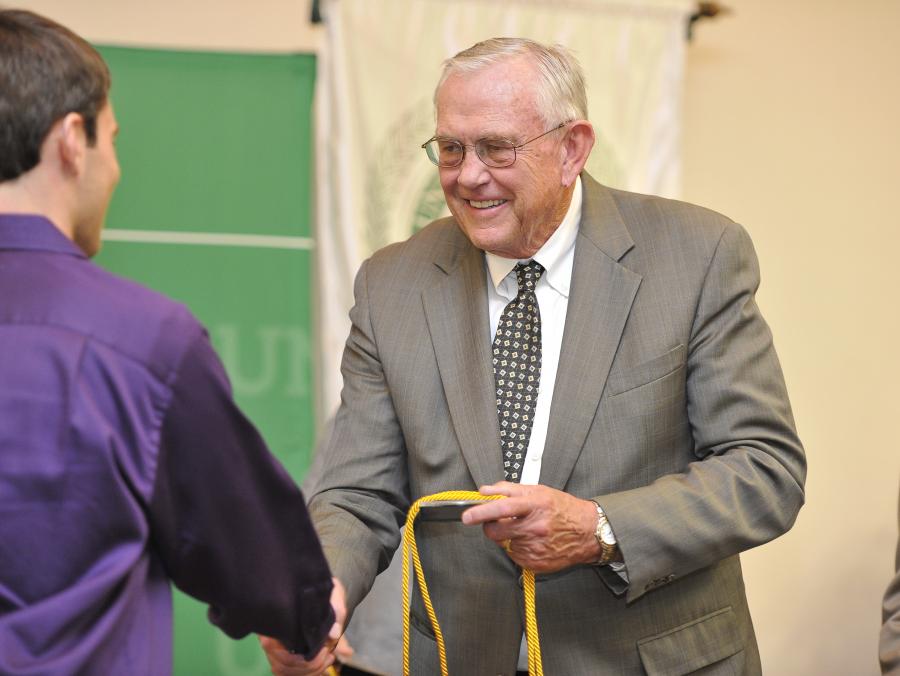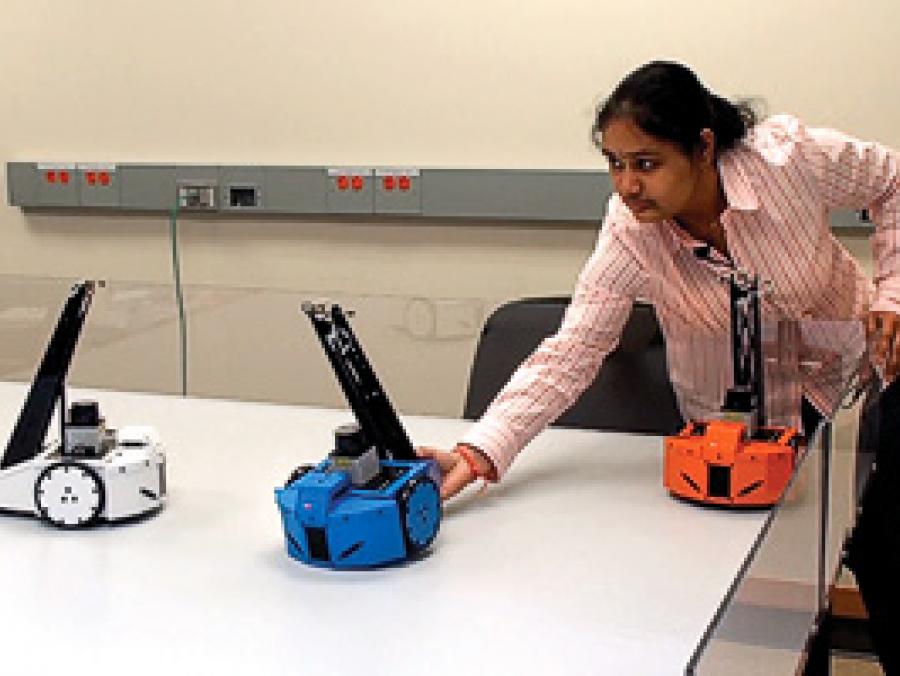When students chose green to be one of UNT’s official school colors more than 100 years ago, they did so trusting that Mother Nature is “kind to those who wear her colors.”
That decision to honor nature was among the first of countless ways the UNT community began to place environmentalism, conservation and sustainability at the heart of UNT. It was likely no accident that the university’s first research faculty member contracted with the City of Dallas to improve water quality.
More about UNT and sustainability
Today, UNT teaches green, researches green and simply is green. UNT offers 65 courses with a sustainable focus, faculty in many disciplines are searching for ways to reduce society’s impact, and in its daily operations UNT is dedicated to treading lightly. The campus is committed to a robust recycling program, fuels its vehicles with biodiesel generated from cafeteria cooking oil, and is retrofitting existing buildings to be more energy efficient while constructing new structures to meet the highest green building standards.
UNT System’s green commitment
The commitment to green is modeled by the UNT System and is shared by all three system schools. In fact, a new facility will open at each UNT System campus this fall, and all three of the new buildings are on track to receive gold-level Leadership in Energy and Environmental Design (LEED) certification.
“We have an obligation to leave to future generations campuses that minimize use of resources and don’t harm the environment,” says Rich Escalante, vice chancellor for administrative services. “There is also the very practical matter of cost. We keep our buildings for 50 to 75 years, and by building in this manner, the buildings pay for themselves through their efficiencies within seven or eight years. Plus, environmentally responsible buildings mean healthier buildings with better air quality.”
UNT’s legacy of sustainability
When UNT was still known as North Texas State Teachers College, J.K.G. “Doc” Silvey, who specialized in freshwater conditions, joined the biology faculty in 1935 as the college’s first research faculty member. He later chaired the department from 1952 to 1973.
“He was the first component in UNT’s green movement,” says Erin Davis, assistant to the director of UNT’s Office of Sustainability. “Since 1935, UNT has had a ‘green’ mindset. It began with Doc Silvey’s environmental awareness campaign and community outreach for pollution and water quality.”
In 1970, UNT opened the Institute of Applied Sciences for interdisciplinary research and public service and in 1990, UNT created the first Environmental Philosophy program in the world. Just two years ago, UNT became the first large Texas university to sign the American College and University Presidents Climate Commitment.
“UNT takes a holistic approach to sustainability, integrating it into all that we do,” says Todd Spinks, director of the Office of Sustainability. “To have a legitimate and credible sustainability initiative, a university must balance its activities, making sure it operates as efficiently as possible and reduces waste, provides students with the intellectual skill-set needed to overcome complex 21st century challenges, and influences behavior on and off campus to lessen the impact of environmental stressors.”
Read some of the practical ways UNT is working to reduce its impact on the environment >>
Office of Sustainability
Two years ago, UNT created the Sustainability Council to begin designing a plan to meet the ACUPCC commitment. Among the council’s recommendations was the creation of the Office of Sustainability to guide UNT to its goal to become carbon neutral.
Spinks says UNT’s Office of Sustainability is unique for two reasons.
“First, the administration has given us full liberty to engage in any activities that the university undertakes,” he says. “That lets us be completely objective as we guide the university and provide benefits to all parts of the UNT family. Second, we are the central point for information collection, organization and dissemination, and coordination of activities related to sustainability. As such, the office brings cohesion to the many sustainability efforts on campus, increasing their impact.”
The office also:
- tracks all of the university’s sustainability efforts and accomplishments throughout its history
- facilitates new innovative sustainability initiatives throughout the campus
- partners in the development of courses and degrees in sustainability
- increases the visibility of and identifies funding for sustainability research activities

Sustainability research and teaching
Many of UNT’s significant research initiatives could help reduce negative environmental impacts. Some of the goals of the university’s research clusters include:
- Exploring how light can be used in extremely small dimensions to develop new nano-devices with applications in energy and a number of other fields.
- Using materials modeling to produce predictive tools to create next-generation materials to help scientists reduce greenhouse gas in the environment.
- Studying signaling mechanisms in plants that control growth, crop yield, defense against pathogens and responses to stress.
- Developing renewable bioproducts to create green solutions for the life cycle of consumer and industry products using plant, bacteria and other bio-agent materials.
In the classroom, UNT has the nation’s leading curriculum in environmental philosophy (according to the International Association of Environmental Philosophy) and offers 65 courses across disciplines that either focus on sustainability issues or incorporate some aspect of sustainability as part of the coursework.
Spirit of Green
For students, being green is about more than being a responsible resident of the planet, it’s also the way you show your UNT pride.
“Green living has infused UNT spirit,” says Heidi Bamberg, women’s studies graduate student. “As our official school color, green as pride and green as sustainable are now interchangeably used. The green movements are very apparent at popular school events, like football games, where things like recycling play an integral part.”
Students’ efforts don’t stop with recycling. UNT students start local food movements, plant trees and reduce their carbon footprint by bicycling and carpooling whenever possible. They adopt sustainable lifestyle practices and serve as examples of conservation and sustainability for the community at large.


























